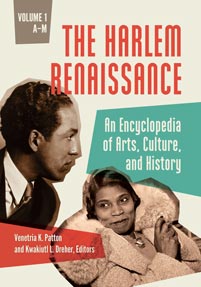Prof. Venetria K. Patton and Prof. Kwakiutl Dreher, co-editors of the forthcoming reference book The Harlem Renaissance: An Encyclopedia of Arts, Culture, and History accepted two of my entries: the Pace Phonographic Record Corporation (500 words) and the Lincoln Theatre (2000 words).

This two-volume encyclopedia provides a comprehensive exploration of the Harlem Renaissance, a period of heightened racial consciousness and artistic production, highlighting artists, historical figures, and writers while providing crucial contextual information about the time, 1916–1937.
This essential resource examines the Harlem Renaissance through A–Z entries that explore topics such as the art, literature, music, dance, and culture of the period. Topical overview essays, a chronology of key moments in the period, and a selection of primary documents assist readers in understanding the origins and development of this critical period in African American history.
This encyclopedia strives for breadth by covering various aspects of the multi-faceted movement. Some entries center on artists, performers, and writers associated with the Harlem Renaissance, while others focus on historical figures and organizations, providing cultural context. Entries on important locales and businesses provide readers with a sense of the environment that fostered this cultural renaissance.
Features
- Provides readers with a wide-ranging exploration of the Harlem Renaissance including major artists, historical figures, and performers through A–Z entries
- Explores the period and its major themes and concerns through an historical overview
- Offers additional context through topical essays that feature key figures, events, organizations, texts, and locations of the period
- Gives readers a first-hand glimpse of the Harlem Renaissance through carefully selected primary documents